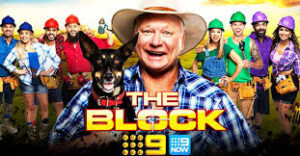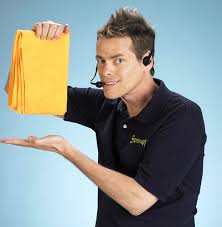Every industry has its own language, which can be fascinating.
In television for example, the tentpole is the flagship show or shows that underpin the financial performance of an entire network. They are the shows with massive audiences for which networks can charge premium advertising rates, knowing that companies will pay.
Think Masterchef, The Block, Married at First Sight, or many of the high-profile sporting properties like the Australian Open, AFL and NRL.

Aussie Lobstermen probably isn’t a tentpole (although it has undoubtedly has some rusted on fans).

Another concept peculiar to advertising is the ad load – in simple terms the amount of time within a given hour that is given over to advertising, rather than programming.
In primetime (6pm – midnight), free to air commercial channels are allowed to run a maximum of 13 minutes of ‘non program matter’(ads) per hour. 14 minutes during Federal elections.

A few years ago the networks lobbied to have that limit lifted to 20 minutes, a bid which thankfully proved unsuccessful.
But of course these days the tv landscape looks completely different. Audiences are moving away from traditional tv channels and habits and are timeshifting their viewing thanks to Video on Demand offerings such as 10 Play and & 7 Plus, and of course subscription services such as Netflix, Binge and countless others.
Binge runs a maximum of 4 minutes of advertising per hour, which it can afford to do by charging higher rates than its competitors (who can run up to a max of 8 minutes but generally run 5 or 6). As an example, they charge around $60 per thousand (viewers) while competitors with higher ad loads charge around half that.
It’s a fantastic demonstration of the ‘Less is more’ principle. Run less ads but charge more and financially you are the same (or ahead) and the viewer gets a much better experience (and probably pays more attention to the ads as a result).

Just recently, the major networks have cottoned onto this and – with the help of AI – have been running all sorts of tests (indiscernible to viewers) involving ad loads and viewing times.
Early results from a trial by Ch 7 supports the idea that there is a direct link between fewer ads and more viewing, especially for younger audiences.
Interestingly, running the same number of ads but in fewer, more concentrated bursts – or ‘pods’ as the networks call them – also had a positive effect.
The Less is More principle is one that experts in many fields adhere to – fashion, interior design, food.
It’s certainly true of the Ensombl platform too.
Less is more when you are talking to advisers
Over 10 years our membership has grown to around 9,500 advice professionals. And one of the drivers of that growth has been the underpinning ethos of the platform – education not indoctrination.
In other words, our users know that when they need to solve an advice challenge or a business problem, they can turn to the platform for help, safe in the knowledge that they will be able to access the insights and recommendations of their professional peers, as well as partner supported content that educates them, rather than tries to sell them something.
Some corporates haven’t quite grasped the principle, and seek the psychological sugar hit of making full blown sales pitches in their sponsored content (oblivious to the fact that advisers simply won’t read or watch this content), while our own partners enjoy the 45% co-creation dividend attached to the content we create in conjunction with advisers.
45% – that’s the uplift in response we found when we tested education – focused content created with adviser insights, against standard corporate content.
And as a demonstration of the ‘Less is More’ principle, it’s pretty strong.
If you need to reach advisers and advice professionals at scale, and marketing ROI is important to you, feel free to reach out for a chat.

